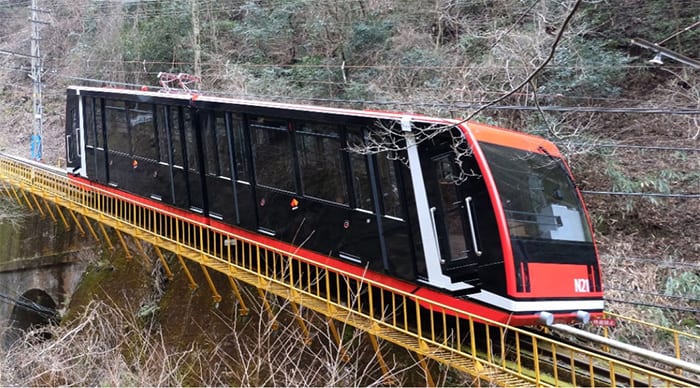Nankai Electric Railway’s Koyasan Cable Line has become the first cable car line in Japan to completely decarbonize and now operates with 100% renewable energy.

A cable car on the Koyasan Cable Line
The Koyasan Cable Line links Gokurakubashi Station on the Nankai Koya Line with Koyasan Station on top of Mount Koya. The town of Koya on top of the mountain is both a center of spiritual pilgrimage and a well-known tourist destination with many temples offering overnight accommodation together with vegetarian Buddhist cuisine and early morning meditation. First opened in 1930, the cable line is now a popular means for reaching the top of the mountain for tourists, pilgrims, and locals alike.

The cable line is an important means of transportation for the monastic community of Mount Koya
The shift to renewable energy sources on the Koyasan Cable Line is part of a raft of recent measures by the Nankai Group to reduce CO2 emissions. These include introducing energy-efficient #8300 series trains in 2015, installing solar power generation systems at Hagoromo Station on the Nankai Main Line (2015) and at a company site in Tannowa (2016), and more recently investing in the “Nankai-no-Mori” forest as a carbon sink.

Solar panels at Nankai’s Tannowa site
The renewable energy that now powers the Koyasan Cable Line is provided from wind, thermal, hydroelectric, and solar power sources supplied by Kansai Electric Power Company (KEPCO). Nankai estimates that they will reduce their CO2 emissions by 60 tons annually by shifting the cable line to renewable energy. The Koyasan Cable Line began running on 100% renewable energy from June 1st this year: just in time to celebrate the United Nation’s World Environment Day on June 5th.
Article by Michael Lambe. Photos courtesy of Nankai Electric Railway. All rights reserved.

